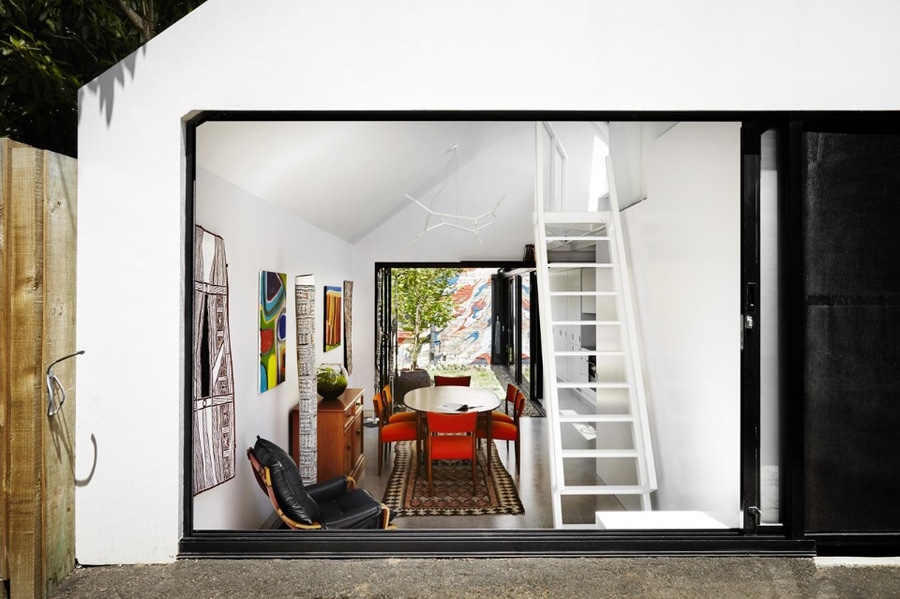
#RESIDENTIAL ARCHITECTURE PROJECTS
Alfred House
Designed by Austin Maynard Architects, Alfred House is an addition and reconfiguration of an existing two storey, two bedroom terrace, with a tired lean-to that had little relationship with the exterior space.
Alfred House is an addition and reconfiguration of an existing two storey, two bedroom terrace, with a tired lean-to that had little relationship with the exterior space. The client wanted Austin Maynard Architects to replicate one of their previous projects, Vader House, as they liked the idea of a centralised courtyard. The architects revisited and evolved, as they were able to push the concept further due to the property’s connection with the laneway. The big challenge was that Alfred had less than half of Vader’s budget.
The lean-to was removed and the space redesigned to include an internal garden, kitchen/laundry, living/dining room, bathroom, (mezzanine) office and store room/garage – for the client’s prized motorbike. Rather than placing the addition directly on the rear of the house, Austin Maynard Architects moved it back to the boundary laneway. In doing so they essentially turned the dodgy little lightwell that you find in most terrace houses, into an entire garden. With a backyard you have to choose to go outside, whereas here you don’t have to make that decision, the walls easily fold away to activate the space in a more natural way.
The floor level of the rear addition is sunken to a depth of 600 millimetres from the height of the laneway. The floor drop results in a generous internal height and uncompromised internal volume but reduces the height of the building externally. The clients wanted to go through council without making any noise, which is difficult when you build in a backyard. In order not to overshadow or overlook, and to maintain the floor levels between the old and the new, the level have been dropped down by four steps. Using glass panels directly on the rear lane which slide back fully, the view as you come from the old house is completely unobscured and creates a wonderful relationship to the laneway.
The way the doors in the kitchen come together without the use of a central column, the deceptive mirror splashback, use of perforated steel to filter light, the way the back glass window opens up completely without a fixed panel – it all required the greatest of effort but appears effortless. There are also some surprises, the street art by Order 55, specially commissioned by the clients, on the original rear facade, and the canary yellow bathroom that dazzles in the otherwise pure white.
Sustainability is at the core of Alfred House. Awning to enable passive solar gain, north-facing glass and perforated metal have been introduced. All windows are double glazed with thermal separated frames. White roofs drastically reduce urban heat sink and heat transfer internally. High performance insulation is everywhere. Along with active management of shade, and passive ventilation demands on mechanical heating and cooling are drastically reduced. A large water tank has been buried within the courtyard. All roof water is captured and reused to flush toilets and water the garden. Where possible architects have sourced local trades, materials and fittings. The new hydronic heated concrete slab provides a large area of thermal mass. Partial submersion reduces surface area and stabilises the internal temperature further.





